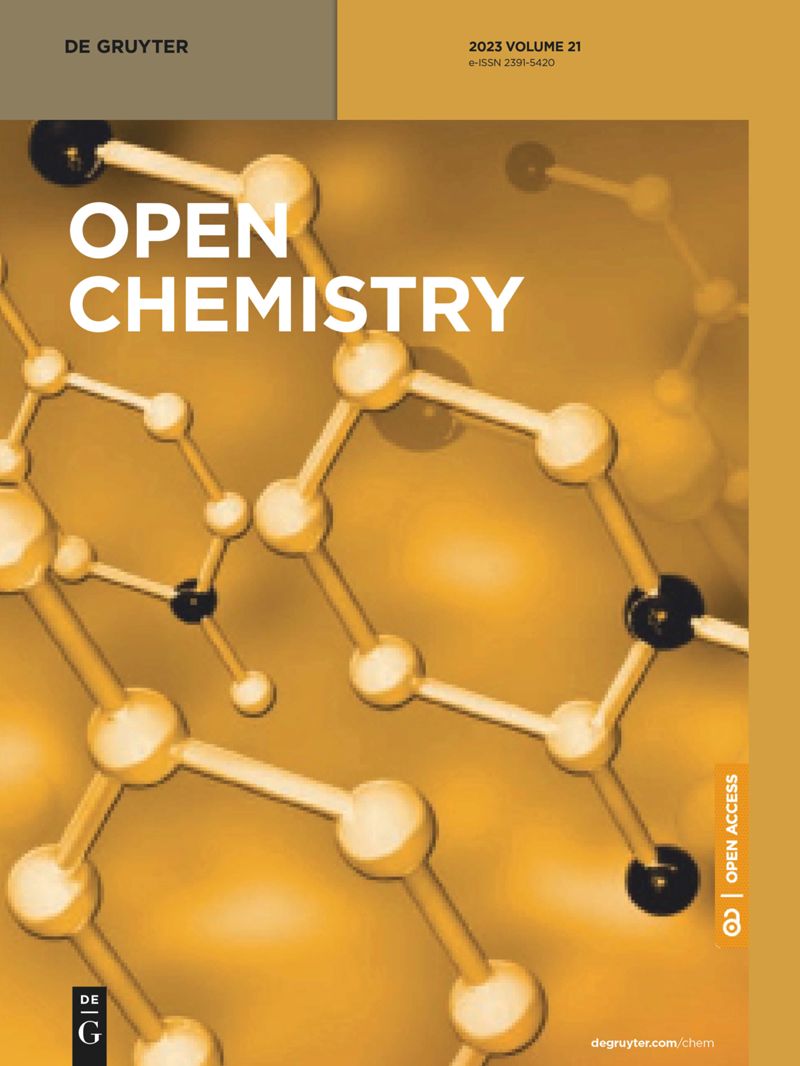富含抗氧化剂的辣木油基食用油凝胶的合成与表征
IF 1.9
4区 化学
Q3 CHEMISTRY, MULTIDISCIPLINARY
引用次数: 0
摘要
本研究旨在使用果胶(PC)和壳聚糖(CS)作为胶凝剂,配制和优化辣木油凝胶。其中包括使用 PC 或 CS 作为单一胶凝剂的单胶凝剂油凝胶,以及结合 PC 和 CS 的二元胶凝剂油凝胶。在二元胶凝剂油凝胶成分中,最稳定的油凝胶 OPCCS2 在添加了抗氧化剂后得到了进一步研究。通过使用各种检测方法,对重要的抗氧化化合物没食子酸当量(GAEs)/茯苓抗氧化提取物(MAEs)进行了量化。最稳定的油凝胶 MCPC1.5% 的油结合能力(OBC)为 99.94 ± 0.05。富含抗氧化剂的油凝胶在 GAEs(4.34 ± 0.025)和 MAEs(4.32 ± 0.03)浓度为 1.5%时过氧化值较低,这表明其富含酚类物质,可延缓油脂过氧化反应。通过偏光显微镜研究了配方的不透明外观。通过傅立叶变换红外光谱分析进行的分子相互作用研究显示,脂肪酸的羧基和多糖链的羟基之间存在氢键相互作用。差示扫描量热仪分析进一步证实了多糖链与油相之间存在强烈的相互作用。这些研究结果表明,优化的油凝胶配方具有改善质地、生物相容性、提高 OBC 和稳定性的潜力,即将取得重大进展。本文章由计算机程序翻译,如有差异,请以英文原文为准。
Synthesis and characterization of antioxidant-enriched Moringa oil-based edible oleogel
This study aims to formulate and optimize Moringa oleifera (Moringa ) oil oleogels using pectin (PC) and chitosan (CS) as gelling agents. These include monogelator oleogels, utilizing either PC or CS as a single gelling agent, and binary gelator oleogels, incorporating a combination of both PC and CS. Among the binary gelator oleogel compositions, the most stable oleogel OPCCS2 was further studied with the addition of antioxidants. The important antioxidant compounds of gallic acid equivalents (GAEs)/Moringa antioxidant extracts (MAEs) were quantified by the use of various assays. The oil-binding capacity (OBC) of the most stable oleogel MCPC1.5% was 99.94 ± 0.05. The lower peroxide value of antioxidant-rich oleogels at 1.5% concentration of GAEs (4.34 ± 0.025) and MAEs (4.32 ± 0.03) suggested its richness of phenols to retard the lipid peroxidation of oil. The opaque appearances of the formulations were studied via polarizing light microscopy. The molecular interaction study through FTIR analysis revealed the hydrogen bond interactions between the carboxyl groups of fatty acids and hydroxyl groups of polysaccharide chains. The differential scanning calorimeter analysis further confirmed the presence of strong interactions between polysaccharide chains and the oil phase. These findings indicate that the optimized oleogel formulations have the potential for imminent advances by exhibiting improved texture, biocompatibility, enhanced OBC, and stability.
求助全文
通过发布文献求助,成功后即可免费获取论文全文。
去求助
来源期刊

Open Chemistry
CHEMISTRY, MULTIDISCIPLINARY-
CiteScore
3.80
自引率
4.30%
发文量
90
审稿时长
6 weeks
期刊介绍:
Open Chemistry is a peer-reviewed, open access journal that publishes original research, reviews and short communications in the fields of chemistry in an ongoing way. The central goal is to provide a hub for researchers working across all subjects to present their discoveries, and to be a forum for the discussion of the important issues in the field. The journal is the premier source for cutting edge research in fundamental chemistry and it provides high quality peer review services for its authors across the world. Moreover, it allows for libraries everywhere to avoid subscribing to multiple local publications, and to receive instead all the necessary chemistry research from a single source available to the entire scientific community.
 求助内容:
求助内容: 应助结果提醒方式:
应助结果提醒方式:


